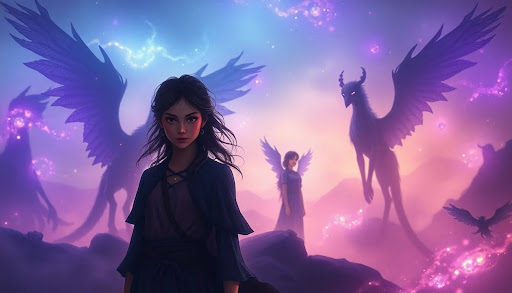The First to Die at the End by A. Silvera – A Heartfelt Prequel Review
What if you knew the exact day you’d die? That question takes center stage in The First to Die at the End, Adam Silvera’s highly anticipated prequel to They Both Die at the End. Set on the day Death-Cast makes its first call, this story introduces us to Valentino and Orion, two characters whose lives collide in a way that’s both tender and devastating. With big questions about love, fate, and the choices we make when time feels finite, this novel is packed with emotion. Whether you’re a longtime fan of Silvera’s books or just starting your journey into his poignant worlds, this review will give you a glimpse into why this heartbreaking tale continues to captivate readers everywhere.
Overview of ‘The First to Die at the End’
Adam Silvera’s The First to Die at the End takes readers back to the origin story of the Death-Cast universe. This prequel to the bestselling They Both Die at the End gives us a new pair of heart-wrenching protagonists and a look at how the infamous Death-Cast system began. It’s a book filled with emotional highs and devastating lows, offering reflections on what it means to live when time is finite.
A Prequel to ‘They Both Die at the End’
If you’re familiar with They Both Die at the End, you’ll immediately recognize the world Adam Silvera created, where people are warned on the day they’ll die. But The First to Die at the End takes us to the very beginning—day one of Death-Cast’s operations. Set years before the original novel, this book explores the uncertainty surrounding a system that’s still a massive, untested experiment. Readers witness the skepticism, fear, and hope that the introduction of this technology brings to society.
The timelines are different, but the emotional resonance is just as strong. While in the original story readers already knew Death-Cast’s impact, this prequel asks: What would it be like to live in a world encountering this for the first time? For more insights into the series as a whole, check out this summary of the book.
Introduction to Death-Cast
Death-Cast is the ticking clock at the heart of these stories. In this universe, Death-Cast is a phone service that alerts people exactly 24 hours before they die. The system isn’t magical; it’s shrouded in mystery. No one knows how it works or why, but one thing is clear—it never gets it wrong.
In The First to Die at the End, Death-Cast is as much a character as the humans it affects. People wrestle with the morality of its existence: Is being warned a gift or a curse? With its very first calls being issued in this book, readers see both the technical glitches and raw emotional responses.
Death-Cast raises questions that linger long after the book ends: Would you live differently if you knew your time was running out? If you’re curious about how Silvera uses Death-Cast across his works, here’s a good look at how the concept plays a role.
Key Characters: Orion and Valentino
At the center of this prequel are two strangers, Orion and Valentino. Their lives collide on the first day of Death-Cast’s rollout, creating an unforgettable story of love and connection.
- Orion Pagan: Orion lives with a chronic heart condition, making him hyper-aware of his own mortality long before Death-Cast. Despite his fears, he’s grounded in optimism and hope. His vulnerability makes him relatable to anyone who has ever felt their time slipping away.
- Valentino Prince: Valentino moves to New York City to chase his dreams, leaving behind a complicated past. He’s on the cusp of a new chapter when Death-Cast derails his plans. Yet, his determination to make the most of every moment resonates deeply with readers.
Their relationship unfolds naturally, a mix of tender moments and raw honesty. It’s this connection, forged under extreme circumstances, that forms the heart of the story.
Themes of Mortality and Grief
As with Silvera’s other works, The First to Die at the End dives deep into themes that are universal yet profoundly personal. The story examines the fragility of life and the inevitability of death. Through Orion and Valentino, Silvera makes readers contemplate questions like: What does it mean to truly live? How do we say goodbye?
Grief is another prominent theme. Death touches every character in different ways, whether through loss, fear, or anticipation. Yet, the book doesn’t just dwell on sadness—it also celebrates the beauty of fleeting moments. It’s a poignant reminder that even when faced with the certainty of death, life is still worth cherishing.
If existential and emotional questions pique your interest, you’ll find this review helpful. It dives further into the book’s themes and impact.
The way the story balances love, loss, and the unknown is hauntingly beautiful. It’s a tale that will make you want to hug your loved ones a little tighter and rethink how you spend your days—all without preaching a single word.
Unique Storytelling Style
Adam Silvera’s The First to Die at the End showcases an extraordinary narrative technique that elevates the reading experience. By weaving multiple perspectives and deep emotional threads, this prequel doesn’t just tell a story—it immerses readers in the lives of its characters, allowing them to feel every moment of hope, fear, and heartbreak.
Multiple Narrators and Perspectives
One of the most compelling aspects of this novel is its use of alternating viewpoints. Silvera disrupts the traditional single-narrative format by giving each protagonist their own voice. This decision enhances the storytelling, creating a 360-degree view of the world and the events unfolding within it.
Through Valentino, readers explore the excitement of fresh opportunities and the bittersweet realities of moving forward. Meanwhile, Orion’s narrative amplifies the stakes, as his medical condition adds a layer of urgency and vulnerability. This dual approach spotlights their individual struggles while seamlessly intertwining their growing connection. The transitions between each perspective feel so organic that it’s hard not to be captivated.
This storytelling style also allows readers to connect deeply with the characters’ emotions. The juxtaposition of optimism and fear, hope and despair, creates a rich tapestry of human experience. For a detailed breakdown of how this narrative structure enriches the story, check out this insightful review of the book.
Emotional Impact of the Story
From the first page, Silvera envelopes readers in a whirlwind of emotions. His ability to evoke empathy is remarkable, often leaving readers reflective long after they’ve put the book down. The emotional weight of The First to Die at the End comes from its ability to humanize profound themes—mortality, love, and purpose—without ever feeling overwhelming.
Silvera portrays sorrow with such authenticity that it’s impossible not to feel it yourself. But it’s not all about grief; there’s hope, too. The characters remind us to treasure fleeting moments, even when life feels heavy. One review perfectly sums up this dynamic, emphasizing how Silvera’s “bittersweet touch” leaves a lasting impression on readers. You can explore more about that here.
Every emotional beat in the story feels earned. Whether it’s Valentino deciding to embrace life’s risks or Orion reckoning with his past, these moments resonate because they’re tied so closely to the characters’ humanity. Silvera’s prose excels at making even the smallest interactions feel significant, ensuring a profound emotional connection between the story and its audience.
Character Analysis
In Adam Silvera’s The First to Die at the End, the story’s emotional heartbeat lies in its beautifully crafted characters. Orion Pagan and Valentino Prince aren’t just protagonists—they’re reflections of hope, fear, and the human desire to connect. Their personal journeys and relationship draw readers in, making their story unforgettable.
Orion Pagan and His Heart Condition: How It Shapes His Character Arc and Worldview
Orion Pagan has lived with a heavy reality his entire life. Born with a chronic heart condition, he faces mortality even without the intervention of Death-Cast. This looming shadow shapes the way he views the world. To Orion, life is fragile, and every breath feels borrowed. While his health challenges could have left him in despair, they instead give him clarity and purpose. He doesn’t waste time—every moment matters.
What makes Orion so compelling is his balance of vulnerability and optimism. He’s not just a sick boy waiting for the inevitable; he’s much more. His longing for meaningful connections stems from the uncertainty of his future. Orion’s inner dialogue often reflects the weight of his condition, but it also highlights a determination to experience love, friendship, and joy while he can. His character asks readers: If you knew your time was limited, how would you live differently?
For more about Orion’s background and complex emotions, visit this character analysis.
Valentino Prince and His Fresh Start: The Significance of His Journey
Valentino Prince represents new beginnings, but his story carries its own weight of challenges. He’s recently moved to New York City, hoping to follow his dreams as a model and leave behind the difficulties of his past. On the surface, Valentino’s character symbolizes hope and opportunity—he’s the kind of person who leaps into life despite the risks.
Yet, his decision to sign up for Death-Cast reveals an underlying fear of the unknown. A life-changing event involving his twin sister marks a turning point, influencing his choices and shaping his worldview. Valentino’s journey is about more than finding success; it’s about embracing vulnerability and navigating life’s unpredictability. His optimism contrasts with Orion’s realism, creating a dynamic that keeps readers invested.
If you want to dive deeper into Valentino’s motivations, check out this detailed breakdown.
Relationship Between Orion and Valentino: The Emotional Weight of Their Bond
The connection between Orion and Valentino is the heart of The First to Die at the End. Their meeting isn’t just chance—it feels like fate. Both are at transformative moments in their lives, and their bond develops quickly yet naturally. Through shared conversations and vulnerable admissions, they create a relationship built on understanding and mutual respect.
Their dynamic goes beyond romance; it’s about two people showing up for each other when it matters most. Orion finds someone who sees beyond his illness, while Valentino discovers a love that is selfless and pure. The emotional weight of their bond is amplified by the ticking clock of Death-Cast. Every moment together feels significant, a reminder to cherish love in all its forms.
For more insights into their relationship and how it drives the story’s central themes, this review explores their bond.
Exploration of Ethics and Technology
The First to Die at the End by Adam Silvera is more than just a gripping narrative—it’s a deep dive into the moral consequences of technology. At its heart lies Death-Cast, an innovation that foretells an individual’s death within the next 24 hours. Its existence raises thought-provoking questions about ethics, societal transformation, and our constant struggle to balance innovation with humanity.
The Moral Dilemmas of Death-Cast
Death-Cast is a tool that no one truly asked for but cannot ignore. By giving people a precise timeline for their mortality, it forces them—and society as a whole—into navigating difficult choices. Do you quit your job the day you get the call? Say goodbye to loved ones or isolate yourself out of fear? These dilemmas, intricately woven into the story, create a ripple effect that touches every character in unique ways.
For some, the system is empowering. It gives them control and an opportunity to tie up loose ends. For others, it feels invasive, stripping life of spontaneity and replacing it with dread. Would you act differently if you knew your time was up? Silvera tackles this ethical quagmire with sensitivity, turning Death-Cast into an allegory for our own tech-driven anxieties. Its existence reminds readers of the potential double-edged nature of technology—both a gift and a curse.
To read more about ethical implications in The First to Die at the End, check out this detailed review of Silvera’s work.
Reactions to Death-Cast’s Launch
The societal response to Death-Cast is as varied as the characters themselves. Some embrace it, seeing it as a necessary step toward a more progressive future. Others reject it outright, likening it to an unnecessary interference in life’s natural course. Unsurprisingly, skepticism and conspiracy theories loom large on launch day, with many doubting whether such a system could even work.
This polarization mirrors real-world reactions to groundbreaking technologies. Just as we debate artificial intelligence or genetic modification today, Silvera’s world questions Death-Cast’s true purpose. Beyond individual fears, there’s a collective struggle: Will knowing death dates unite us or deepen humanity’s divisions?
If you’re curious about how technology elements like Death-Cast were received in the book, this review provides nuanced insights.
Social Issues Embedded in the Story
At its core, The First to Die at the End beautifully integrates broader social themes within its framework. Domestic violence, prejudice, and systemic inequality find space in the narrative, grounding the otherwise futuristic Death-Cast in the stark realities of today’s world.
For example, Silvera doesn’t shy away from exploring familial conflicts and past traumas. Through characters like Valentino and Orion, readers glimpse the weight of domestic abuse and its long-lasting effects. Additionally, prejudice—whether regarding sexuality, economic status, or health—emerges as a key subplot, showcasing the hurdles that compound when one is already facing mortality.
These themes enrich the story, reminding us that even in a world reshaped by groundbreaking technology, humanity’s age-old struggles remain. The book’s balance of intimate personal stories and larger societal critiques is what makes it so resonant.
For more exploration of the social issues and dynamics in the book, visit this insightful take on the themes in Silvera’s novel.
Comparison to They Both Die at the End
Adam Silvera’s The First to Die at the End builds upon the foundation laid by They Both Die at the End, offering an enriching experience for fans while exploring new depths. While the prequel is its own story, the parallels and continuity in themes ensure both familiarity and fresh discoveries. Let’s dig into what makes these two books connect yet stand uniquely apart.
Building on Familiar Themes
Both novels share a deeply emotional core that asks profound questions about life, love, and mortality, but they approach these universal topics from slightly different angles. In They Both Die at the End, the focus is heavily on the impact of knowing exactly when you’ll die and how that shapes your final hours. Mateo and Rufus, armed with their Death-Cast alerts, navigate a single, bittersweet day, cherishing fleeting moments and forging a deep connection.
Similarly, in The First to Die at the End, themes of mortality and seizing the present take center stage, but with an added layer of uncertainty. As Death-Cast makes its debut, characters like Orion and Valentino wrestle not only with fate but also with the skepticism and chaos surrounding a brand-new system. This brings a rawness to their journey, echoing the same urgency of the original novel while delving into uncharted emotional territory.
Here’s a great breakdown of They Both Die at the End‘s themes to better understand these familiar threads. Explore more here.
What’s particularly captivating is how both books emphasize choice. Both pairs of protagonists must decide how to live their final hours—whether to embrace love and connection or succumb to fear. This thematic continuity is a testament to Silvera’s talent for capturing the human experience in its most vulnerable moments.
Addressing Reader Expectations
When stepping into a prequel, there’s always the challenge of meeting reader expectations. Fans of They Both Die at the End likely walk into The First to Die at the End with high hopes, yearning for the same emotional intensity they experienced with Mateo and Rufus. Adam Silvera masterfully balances this by keeping the tone and stakes familiar while introducing fresh, compelling perspectives through Orion and Valentino.
One key way Silvera maintains continuity is through the emotional weight of his storytelling. Readers are still faced with the aching beauty of fleeting moments, but now, they also get to see the world through the lens of Death-Cast’s first, imperfect steps. This added layer invites readers to reconsider what they thought they knew about the Death-Cast universe.
At the same time, the prequel successfully stands on its own. Themes of hope, love, and the fear of the unknown resonate universally, ensuring that even new readers who haven’t picked up the first book can connect with the story. For those familiar with both, the contrasts between the two timelines offer plenty to savor while deepening their understanding of the world Silvera has created.
If you’re curious about how The First to Die at the End balances continuity with unique elements, check out this detailed review. Whether you’re a longtime fan or just dipping your toes into Silvera’s universe, the prequel manages to deliver on its immense promise while charting a course all its own.
Critiques and Reception
Adam Silvera’s The First to Die at the End has evoked a spectrum of emotions from readers, thanks to its emotional narrative and thought-provoking concept. While it delivers heartwarming character development and poignant messages about life and mortality, it hasn’t been immune to critique. Let’s dive into what readers loved most and the areas where feedback was a little more critical.
Strengths: Emotional Depth and Character Development
One area where this book shines is its ability to evoke deep emotions. Silvera masterfully crafts characters who feel alive, flawed, and incredibly relatable. Valentino and Orion are more than just protagonists; they’re vessels for complex human emotions, ranging from love and hope to fear and grief. These characters navigate impossible choices, and their vulnerability makes it easy for readers to connect with them.
Silvera also excels in creating moments that linger long after the story ends. Valentino’s optimism contrasts beautifully with Orion’s guarded nature, creating tension and tenderness in equal measure. Their bond grows in a way that feels honest and raw, casting a spotlight on the importance of connection, even in the most fleeting moments of life. As one reviewer pointed out, the novel “embraces the emotional highs and lows we often fear to face in real life,” making it a cathartic read (source).
The way Silvera handles grief also deserves praise. Unlike many stories that treat sadness as a hurdle to overcome, this book sees it as an integral part of living fully. Readers frequently comment on how the story sensitively explores the reality of death and the value of every moment. This review captures the book’s emotional pull perfectly: it is “a story of fleeting moments, heartbreaking yet uplifting in equal measure” (source).
Criticisms: Pacing and Repetition of Themes
Despite its emotional resonance, The First to Die at the End hasn’t escaped criticism. One issue brought up by some readers is the pacing. The book takes its time building up its characters’ stories, which, for a novel dealing with such a high-stakes premise, can occasionally feel like it drags. Readers expecting rapid twists and a breakneck pace might find themselves longing for the story to move more swiftly.
Another critique lies in Silvera’s focus on recurring themes. While the novel’s exploration of love, mortality, and purpose draws readers in, some have noted that these concepts feel overly familiar, especially for those who have read They Both Die at the End. As a result, readers may find the prequel slightly predictable in how it handles its big questions about life and death.
That said, these criticisms don’t necessarily overshadow the book’s merits. Even with its slower rhythm and thematic similarities, many agree that it’s a “worthy companion piece” that expands the Death-Cast universe in meaningful ways (source). For fans of the original book, these familiar elements may feel like revisiting a comforting, albeit bittersweet, space.
Who Will Enjoy This Book?
Adam Silvera’s The First to Die at the End is not just another YA novel; it’s an emotional rollercoaster filled with universal questions about life, love, and mortality. Whether you’re a seasoned fan of Silvera’s storytelling or someone looking for a deeply reflective read, this book has its audience firmly in mind.
Ideal Reader Demographics
This book appeals strongly to readers who enjoy emotional, character-driven narratives. If you thrive on stories that make you think and feel in equal measure, The First to Die at the End will hit all the right notes. It’s perfect for fans of novels like The Fault in Our Stars or If I Stay, where relationships and introspection drive the plot forward.
- Young Adult Readers: Teens and young adults who enjoy contemporary fiction with a sprinkle of speculative elements will find this book captivating. The relatable characters and raw emotions resonate with younger audiences finding their way in the world.
- LGBTQ+ Representation Advocates: The story prominently features queer protagonists, making it an important addition to the growing selection of LGBTQ+ focused literature. Valentino and Orion’s journey is a beautiful reminder of love’s power to transcend barriers.
- Fans of Realistic Yet Thought-Provoking Stories: The book expertly blends grounded, emotional storytelling with its unique Death-Cast concept. Fans of Adam Silvera’s They Both Die at the End will specifically enjoy deeper insights into the Death-Cast universe.
Additionally, anyone curious about morality, human connection, or the fragility of life will find themselves drawn to this narrative. If you want to better understand why this book resonates so strongly, check out this review on Goodreads.
Recommended Reading Order
Should you read this book before or after They Both Die at the End? That’s a fun question for fans and newcomers alike. Let’s break it down.
- If You’re New to the Series: Starting with The First to Die at the End might be the better option. As a prequel, this book provides the backstory to Death-Cast’s world. By beginning here, you’ll dive into the system’s launch and experience characters grappling with its uncertainties—offering a smoother introduction to Adam Silvera’s universe.
- If You’ve Already Read They Both Die at the End: For those who’ve experienced Mateo and Rufus’ journey, this prequel expands the Death-Cast world beautifully, providing new layers of meaning. Reading The First to Die at the End feels like peeling back another layer of a universe you thought you already knew.
- Standalone Potential: The beauty of this book is that it works as a standalone as well. Whether you’re diving in for the emotional depth or the concept, you’ll walk away moved and satisfied, even if you don’t plan to read the companion book.
For more guidance on where to start with Adam Silvera’s books, you might find this helpful reading order guide worthwhile.
Reading order aside, one thing is clear: The First to Die at the End promises an unforgettable experience no matter when you pick it up. And if you’ve been debating whether to give it a shot, there’s no wrong place to start.
Conclusion
Adam Silvera’s The First to Die at the End offers a powerful reflection on love, mortality, and human connection. Its emotionally rich storylines and thought-provoking themes make it a standout read for both longtime fans and newcomers alike. Through the lives of Orion and Valentino, the book reminds us to cherish fleeting moments and face life’s uncertainties with courage.
If you’re looking for a novel that will leave you thinking long after the final page, this one deserves a spot on your shelf. Dive into their world and see for yourself—what would you do if you knew your time was almost up? Let us know your thoughts, and don’t forget to share it with someone who needs an unforgettable story.







